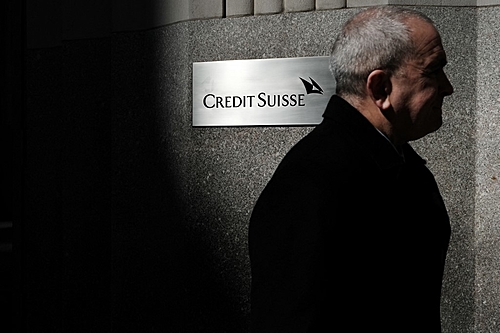
Credit Suisse announced this Thursday (16/03) that it borrowed 54 billion dollars from the Swiss Central Bank, in a move to strengthen its liquidity and deposit reserves. Founded 167 years ago, the second largest Swiss bank is facing the worst moment in its history.
The bank also announced a series of debt repurchase operations, worth an estimated US$3 billion.
“These steps demonstrate decisive action to strengthen Credit Suisse as we continue the new strategic transformation to add value to our customers and other stakeholders,” said bank CEO Ulrich Körner in a statement.
Credit Suisse is the first major global bank to receive an emergency bailout since the 2008 financial crisis, and its troubles have raised serious questions about the ability of central banks to sustain their fights against inflation and aggressive interest rate hikes.
Credit Suisse experienced its worst day on the stock exchange this Wednesday, with a drop of more than 20% in the value of its shares, with negative reflections on the shares of other European banks.
Founded in 1856, the Zurich-based bank has lost around 30% of its value on the Zurich stock exchange since the middle of last week, at a time when its internal crisis, which came to light in 2019, was exacerbated by instability in the sector. financial crisis triggered by the collapse of the Silicon Valley Bank (SVB) in the USA.
Earlier in the day, Credit Suisse’s two top executives tried to reassure investors of the financial strength of the banking giant, but failed to convince them.
global instability
The concern with Credit Suisse goes beyond the borders of the European country and the US Treasury also mentioned that it is “monitoring the situation and in contact with its international counterparts”.
In France, Prime Minister Elisabeth Borne publicly appealed to the Swiss authorities to resolve the bank’s problems and asked her finance minister to speak with his counterpart in Bern.
For the SNB and Finma, “the current turmoil in the US banking market does not suggest that there is a risk of direct contagion to Swiss establishments”.
Credit Suisse posted a loss of 1.6 billion euros in 2021, and 7.4 billion euros in 2022. The bank also suffered withdrawals worth 126 billion euros in 2022.
Reasons for the crisis
Among the main factors behind the bank’s dismal accounts is its exposure to venture firms that have collapsed in previous years, such as US hedge fund Archegos and Anglo-Australian financial services firm Greensill.
In addition to the financial difficulties, there are reputational issues at the bank, which have led to an extensive reshuffle of its board in recent years.
The main strategy that the bank launched to try to put an end to its crisis is a restructuring plan launched in October last year, which included a capital increase of 4 billion euros, the dismissal of 9 thousand employees worldwide and a 15% cost reduction.
The capital increase made the Saudi National Bank the largest shareholder in the company, after investing 1.5 billion euros in shares. The head of the Saudi bank, Ammar al Khudairy, said on Wednesday he would not increase his investment, which contributed to Credit Suisse shares falling further.
bankruptcy rumors
Until last year’s capital increase, the largest shareholder was the American group Harris Associates, which left the bank after the capital increase. More than 20% of Credit Suisse is now owned by Middle Eastern investors.
The Saudi state bank is followed by the Qatar Investment Authority, manager of the emirate’s sovereign wealth fund, with 5.03% of the shares, and by the Saudi group Olayan, linked to a wealthy Saudi family, with 5% of the shares.
The bank’s many problems fuel rumors about an eventual bankruptcy, but the Swiss press also mentions the possibility of it being taken over by its main competitor in the country, UBS.
Source: www.brasildefato.com.br

